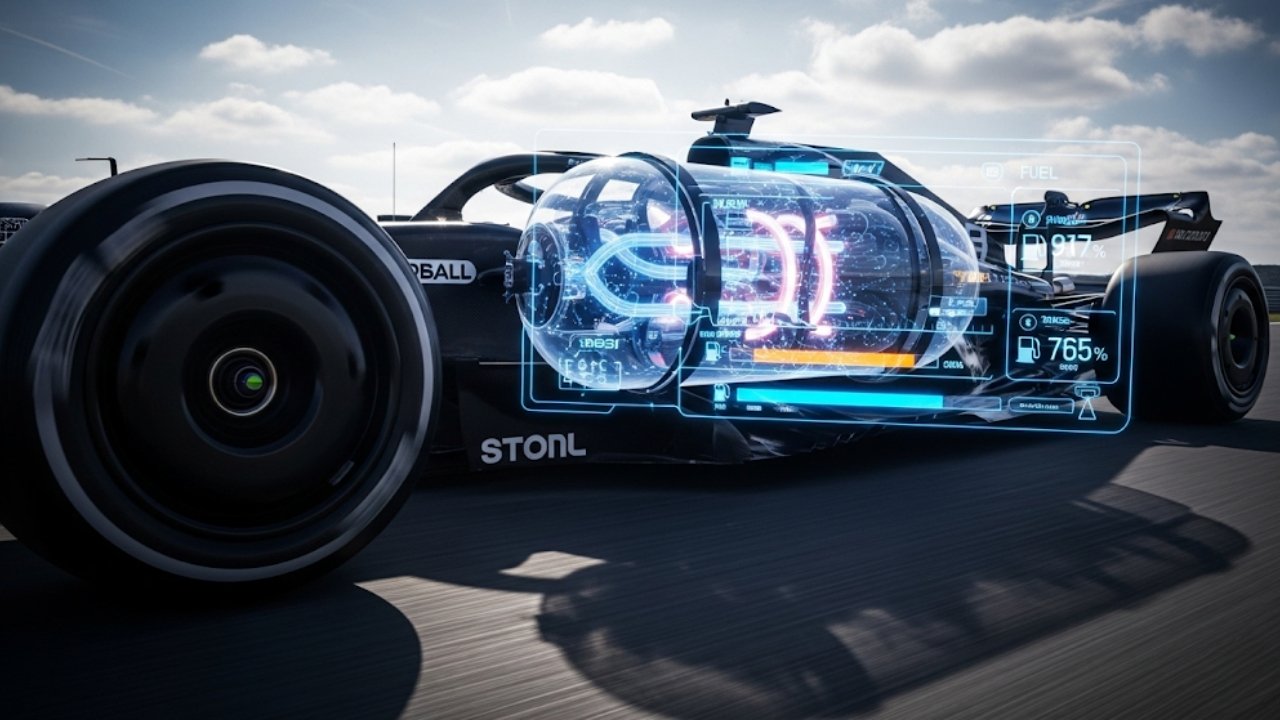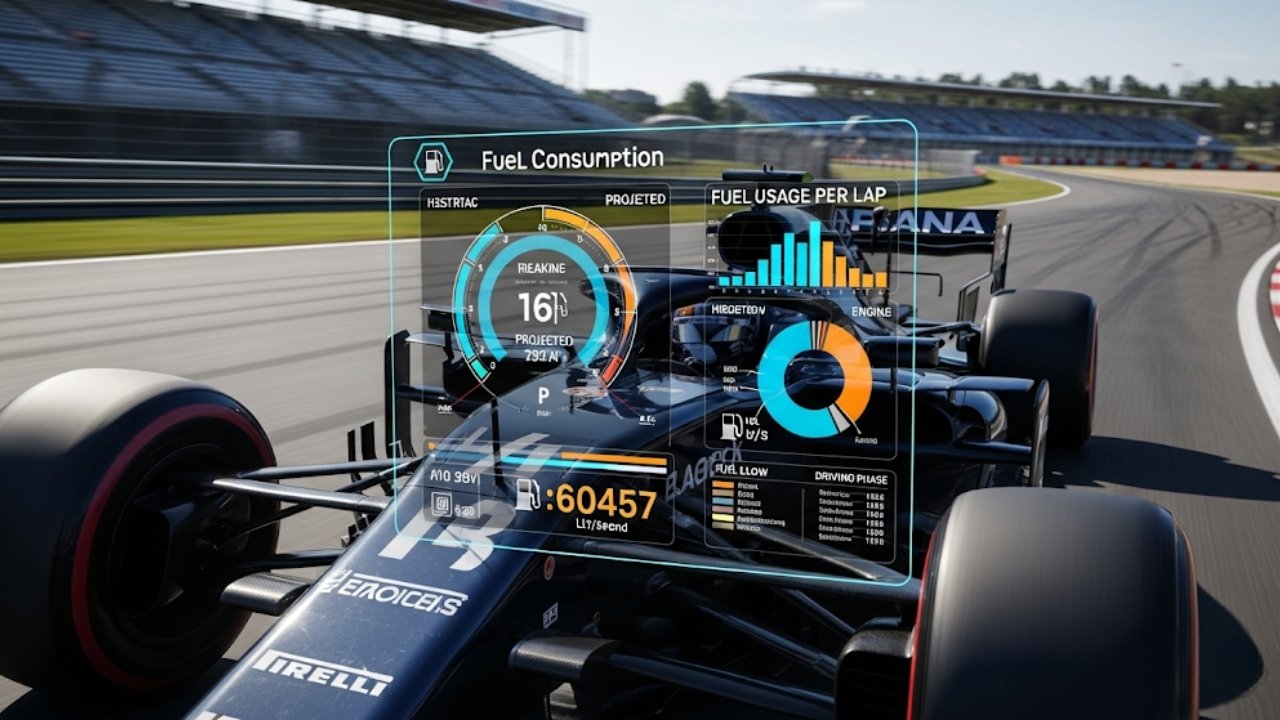How Much Fuel Does an F1 Car Use?

When you hear a Formula 1 car scream down the track at 200 mph, it’s easy to think of speed, engineering, and adrenaline. But what you don’t often hear people talk about is fuel—how much fuel does an F1 car use during a race? Believe it or not, fuel isn’t just about going fast. It’s about strategy, weight balance, engine management, and even winning or losing a championship.
I still remember watching my first F1 race with my dad—both of us glued to the screen, engines roaring through the speakers. My dad turned to me and said, “You know, these cars burn through fuel like a fighter jet.” That comment stuck with me. And years later, here I am, deep-diving into the world of F1 fuel usage—not just to satisfy my curiosity, but to answer a question that many fans silently wonder about.
In this article, you’ll discover:
-
The average fuel usage of an F1 car per race
-
How fuel limits impact race strategy
-
Why fuel efficiency is now just as important as horsepower
-
How fuel technology in F1 is shaping the future of road cars
-
And loads of personal insights and facts to make it all click
So if you’ve ever asked yourself, “How much fuel does an F1 car use?” — you’re about to find out in the most human, down-to-earth way possible.
In This Article
- 1 ⛽ Breaking Down Fuel Consumption: How Much Does an F1 Car Really Use?
- 2 Strategy Over Speed: How Fuel Limits Shape F1 Races
- 3 ️ Fuel Evolution: From Roaring V10s to Eco-Conscious Hybrids
- 4 Quick Highlights: F1 Fuel Consumption Facts
- 5 Real-Time Monitoring: How Teams Keep Tabs on Fuel from the Pit Wall
- 6 Mental Math: The Psychological Toll of Fuel Management on Drivers
- 7 From Track to Street: How F1 Fuel Technology Shapes Your Everyday Car
- 8 Real-Life Anecdote: The Day Fuel Won the Race
- 9 ❓ FAQs: Fuel Usage in Formula 1
- 9.1 1. How much fuel does an F1 car use in one race?
- 9.2 2. Do F1 cars refuel during races?
- 9.3 3. How much fuel is used per lap?
- 9.4 4. Why is fuel limited in Formula 1?
- 9.5 5. What type of fuel do F1 cars use?
- 9.6 6. What happens if an F1 car runs out of fuel?
- 9.7 7. How is fuel consumption monitored in real time?
- 9.8 8. Are F1 cars becoming more fuel efficient?
- 10 Final Thoughts: More Than Just a Tank of Fuel
⛽ Breaking Down Fuel Consumption: How Much Does an F1 Car Really Use?

But here’s the twist: since 2014, the FIA has capped fuel usage at 110 kg (around 145 liters) for a full Grand Prix distance. That’s roughly 305 kilometers (190 miles). So if we do the math, that works out to about 1.5 to 2.5 miles per liter, depending on track layout, weather, driving style, and traffic. Pretty thirsty, right?
| Metric | Value |
|---|---|
| Max Fuel Allowed | 110 kg (~145 liters) |
| Average Race Distance | 305 km (190 miles) |
| Fuel Economy | ~1.5–2.5 mpg (miles per liter) |
| Fuel Tank Size | Around 110 kg capacity |
| Engine Power | Over 1000 horsepower (hybrid) |
What’s incredible is that despite these limits, lap times have actually gotten faster, thanks to better hybrid systems and clever fuel mapping. These cars recover energy under braking, and then re-use it for acceleration. It’s like giving your car a second wind every lap.
But don’t be fooled—drivers can’t just go pedal-to-the-metal every second. They often need to lift and coast (letting off the throttle early into corners) to save fuel. And this brings us to the next major point: strategy.
Strategy Over Speed: How Fuel Limits Shape F1 Races
Imagine you’re a chef with just 1 cup of rice to cook a three-course meal. You’d need to plan every step, every portion, and every minute. That’s exactly how fuel strategy works in Formula 1. Teams don’t fill the tank to the brim—they fuel just enough to finish the race while staying as light and fast as possible.
Fuel adds weight. And every extra kilo slows a car down. So, the ideal strategy is to carry only what you absolutely need. But that’s a gamble—one safety car or unexpected tire issue, and suddenly, you’re using more fuel than planned.
Now here’s where it gets emotional: In the 2020 Austrian Grand Prix, George Russell ran out of fuel near the finish line. That moment felt like a punch to the gut—not just for him, but for fans who knew how perfectly he had driven. Just one miscalculation in fuel usage changed the course of that race. That’s the razor-sharp edge F1 lives on.
Some teams even use fuel burn simulations to plan for things like headwinds, traffic, and overtakes. And yes, this tech is so good it can predict how much fuel an F1 car will use down to the milliliter.
️ Fuel Evolution: From Roaring V10s to Eco-Conscious Hybrids
Let me take you back to the early 2000s. F1 cars ran on V10 engines, and the sound alone could shake your ribcage. These monsters would guzzle 250 liters or more per race. Fuel economy? That was a joke back then.
But the world changed. Environmental awareness grew. Regulations tightened. So in 2014, Formula 1 shifted to 1.6-liter V6 turbo hybrid engines with energy recovery systems. That’s when the sport began focusing not just on speed, but on efficiency.
The hybrid tech includes two recovery systems:
-
MGU-K: captures energy from braking
-
MGU-H: harvests heat from the turbo
These systems feed electricity back into the car, helping it accelerate without burning extra fuel. It’s like giving the car a shot of espresso with zero calories.
Today’s cars use bio-components in their fuel—10% ethanol, and moving toward 100% sustainable fuels by 2026. So the next time someone asks, “How much fuel does an F1 car use?” you can proudly say, “Not as much as you’d think—and they’re getting better every year.”
Quick Highlights: F1 Fuel Consumption Facts
Here’s a fast breakdown for easy reference:
-
Max fuel load: 110 kg per race
-
Fuel tank capacity: Around 145 liters
-
Average fuel use: 2-3 liters per lap
-
Top speeds: Over 360 km/h (223 mph)
-
Lap length impact: Longer laps use more fuel
-
Energy recovery: Saves ~30% of fuel per lap
These figures show just how tight the balance is between speed, power, and fuel usage in modern Formula 1.
Real-Time Monitoring: How Teams Keep Tabs on Fuel from the Pit Wall
It might sound wild, but Formula 1 engineers can tell how many milliliters of fuel are being used at any moment during a race. The level of tech involved is like something out of a sci-fi movie. Each car has multiple sensors inside the fuel system that feed live data to the team’s race engineers, who sit in the paddock watching everything like hawks.
If the car is using too much fuel too quickly, they’ll alert the driver on the radio:
“Engine mode 7, lift and coast into Turn 5.”
Now, to us that sounds like gibberish. But to the driver, it means switch to a fuel-saving map and back off the throttle earlier. These engine maps change how power is delivered and how energy recovery kicks in. It’s like switching your phone to battery saver mode—except you’re doing 200 mph.
The cool part? Fans listening to team radios get to hear some of these messages. It gives you a peek into the split-second decision-making that makes or breaks races. One wrong number, one late adjustment—and boom, your race is over because you ran out of fuel.
Mental Math: The Psychological Toll of Fuel Management on Drivers
Let’s talk emotions for a second. Driving an F1 car isn’t just about speed. It’s about precision, focus, and pressure. Fuel management plays a huge role in that. Drivers don’t just hit the throttle and pray. They’re constantly calculating in their heads:
-
How hard can I push?
-
Do I need to lift off into the next corner?
-
Can I overtake without running rich?
Imagine juggling all that while weaving through 20 corners per lap at breakneck speeds, dealing with tire degradation, engine temps, brake bias… and still trying to beat the guy behind you.
I once heard Lewis Hamilton say in an interview that fuel saving can be more stressful than racing flat-out. It’s like running a marathon and being told to breathe less. You’re holding back—against instinct—and still trying to win. That internal conflict is pure drama, and it’s one of the reasons Formula 1 fuel usage isn’t just a number—it’s a mental game.
From Track to Street: How F1 Fuel Technology Shapes Your Everyday Car
Now here’s a fact that blows most minds. The same fuel-saving tech developed for Formula 1 is finding its way into your family car. Hybrid engines, turbocharging, energy recovery systems—F1 has been the test lab for all of this.
In fact, the MGU-K system in F1 works almost exactly like regenerative braking in a Toyota Prius or a Tesla. When you hit the brakes, your car stores energy instead of wasting it as heat. That tech was fine-tuned on the racetrack.
The 2026 F1 regulations will require 100% sustainable fuels, made from waste and synthetic sources. If it works—and it will—it could change the way the entire planet powers cars, planes, and maybe even ships. So yeah, asking “how much fuel does an F1 car use” opens up way more than just race stats—it opens the door to our shared automotive future.
Real-Life Anecdote: The Day Fuel Won the Race
One of the most unforgettable moments in recent F1 history was the 2019 Canadian Grand Prix. Sebastian Vettel, racing for Ferrari, was leading. But Lewis Hamilton was right behind, calmly saving fuel, staying in a lower engine mode for most of the race.
In the closing laps, Hamilton cranked up the power—something Vettel couldn’t match because he had used more fuel earlier on. Hamilton closed the gap, forced Vettel into an error, and ultimately took the win. All because his team managed fuel smarter.
You don’t need a faster car. You just need a better strategy.
❓ FAQs: Fuel Usage in Formula 1
Here are some frequently asked questions that fans—both new and seasoned—often wonder about:
1. How much fuel does an F1 car use in one race?
An F1 car is allowed to use a maximum of 110 kg of fuel, which is about 145 liters, during a full race of around 305 km (190 miles).
2. Do F1 cars refuel during races?
No, refueling has been banned since 2010. Cars must start with all the fuel they need for the race, making fuel strategy critical.
3. How much fuel is used per lap?
It depends on the circuit, but the average is about 2 to 3 liters per lap. Tracks with long straights like Spa or Monza use more than tighter circuits like Monaco.
4. Why is fuel limited in Formula 1?
To promote efficiency, sustainability, and better racing strategy. It also helps limit engine power indirectly and promotes innovation.
5. What type of fuel do F1 cars use?
F1 cars use a highly-refined unleaded racing fuel, similar in composition to what you find at gas stations, but with much tighter tolerances and performance additives.
6. What happens if an F1 car runs out of fuel?
It must stop immediately. The rules require cars to finish with at least 1 liter of fuel for post-race testing. If not, they can be disqualified.
7. How is fuel consumption monitored in real time?
Advanced sensors in the fuel system send live data to the team pit wall and FIA. Any overuse is flagged instantly.
8. Are F1 cars becoming more fuel efficient?
Absolutely. Today’s F1 cars produce more power while using 35% less fuel than those from a decade ago, thanks to hybrid systems and smarter engine design.
Final Thoughts: More Than Just a Tank of Fuel
At the end of the day, asking “how much fuel does an F1 car use” is like asking how a painter uses color. It’s a functional part of the masterpiece, but also a medium for creativity, expression, and performance. Every drop matters. Every choice has a cost.
What makes Formula 1 so captivating isn’t just the speed—it’s the balance between man, machine, and molecule. Fuel is the invisible thread that ties all three together.
So next time you’re watching a Grand Prix, remember this: behind every corner, every pit stop, every overtake, there’s a tiny voice in the driver’s ear whispering—“mind the fuel.”






